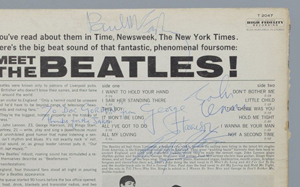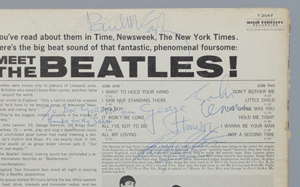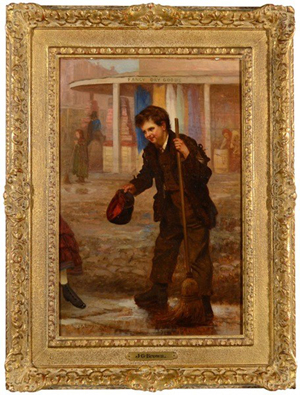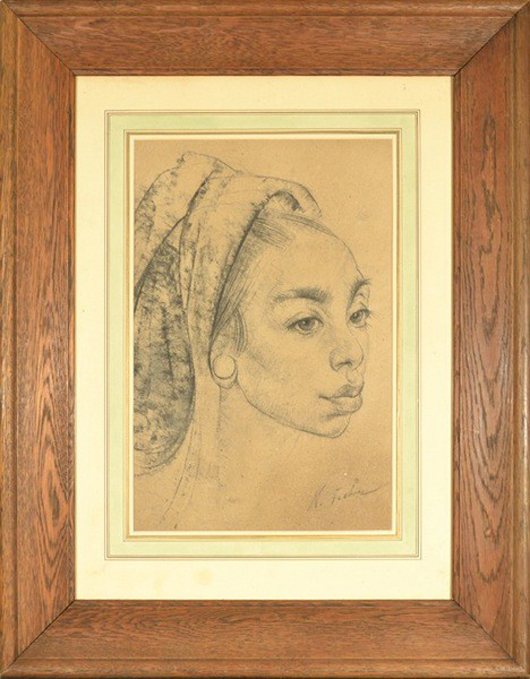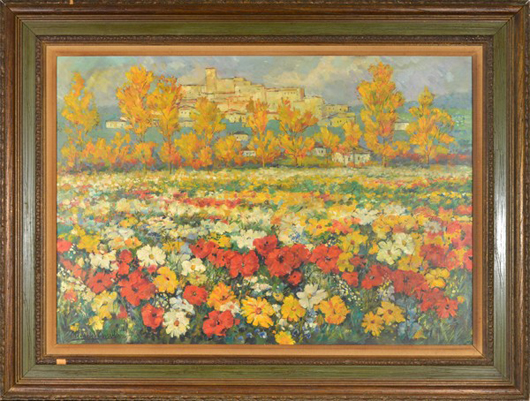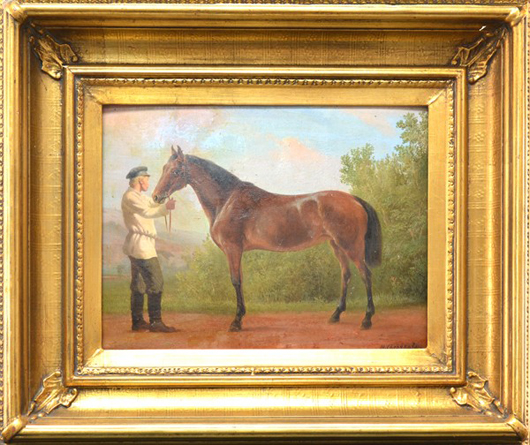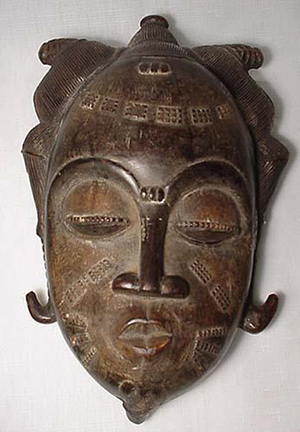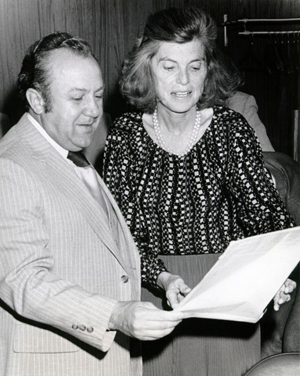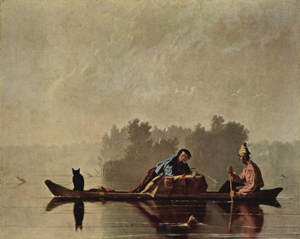
A platinum and octagonal step-cut diamond ring sold for $268,000. Image courtesy of Leslie Hindman Auctioneers. CHICAGO – An audience eager for antique jewels helped make Leslie Hindman Auctioneers’ September Fine Jewelry and Timepieces auction by a resounding success, realizing over $3 million.
Fine jade jewelry, in particular, was in high demand on Sept. 18 from an international group of collectors. A pair of platinum, sapphire, diamond and carved jade pendant earrings sold for $10,980, quadrupling the high estimate, while a fine “glassy” jade bead strand sold for $12,200.
“Demand from the Asian market for fine quality was evident in the strong prices realized for jade jewelry,” said Hindman jewelry specialist Alexander Eblen,
Important diamonds were the high point of the sale, indicative of the current market’s desire for fine quality and large size. A vintage Van Cleef & Arpels platinum ring containing an excellent 7.00-carat emerald cut diamond and two triangular brilliant cut side diamonds outperformed its estimate bringing $244,000. Similarly, a beautifully cut 7.52-carat emerald cut diamond ring realized $268,000. Fancy color diamonds also made an impression. A 5.33-carat radiant cut fancy yellow diamond ring realized $53,680 amidst substantial competition. Additionally, a rare fancy purplish pink pear shape diamond of 1.10 carats brought $43,920, while an elaborate necklace containing a fancy yellow diamond, an emerald and numerous white diamonds sold for $18,300.
Signed works fared particularly well in a sale where collectors were ready to compete for fine examples. A contemporary yellow gold and lapis lazuli collar necklace by Elsa Peretti for Tiffany sold for $10,980 and a vintage Van Cleef & Arpels carved coral ring sold for $6,710. The rich tones of high-karat gold jewelry resonated with the audience and were in high demand. A 22K gold, baroque pearl and rose cut diamond bib necklace brought $18,300 against an estimate of $3,000-$5,000. Antique and vintage timepieces performed well including a rare Edwardian platinum and diamond pendant watch by Patek Philippe and wristwatches from the 1960s were also highly sought after.
Important natural colored gemstones proved their collectible value in the current market by achieving excellent prices. A fine pair of certified Colombian emerald earrings sold for $17,080 while an exceptional certified natural Sri Lankan sapphire in an Edwardian bracelet brought $26,840. An intricate platinum, diamond and sugarloaf cabochon cut emerald vintage ring captured the attention of buyers and sold for $24,400.
Leslie Hindman Auctioneers’ next Fine Jewelry and Timepieces auction will be held Dec. 2. Consignments are invited for upcoming auctions; contact Alexander Eblen at 312-334-4233 for more information.
Click here to view the fully illustrated catalog for this sale, complete with prices realized.
ADDITIONAL LOTS OF NOTE

A platinum and diamond ring, Van Cleef & Arpels, sold for $244,000. Image courtesy of Leslie Hindman Auctioneers.
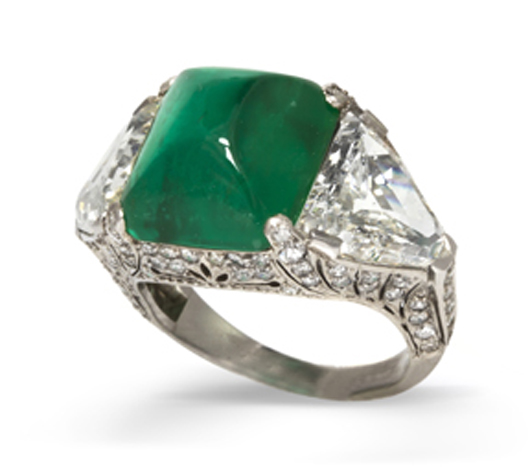
A platinum, emerald and diamond ring sold for $24,400. Image courtesy of Leslie Hindman Auctioneers.
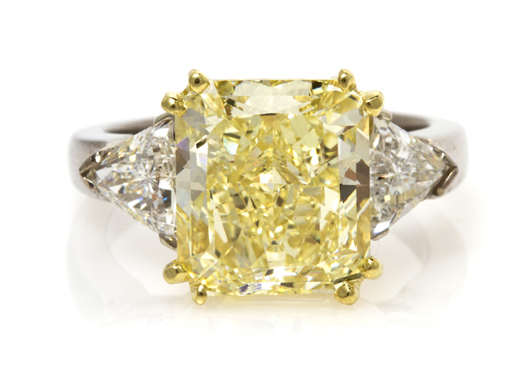
An 18K gold, fancy color yellow and white diamond ring sold for $53,680. Image courtesy of Leslie Hindman Auctioneers.
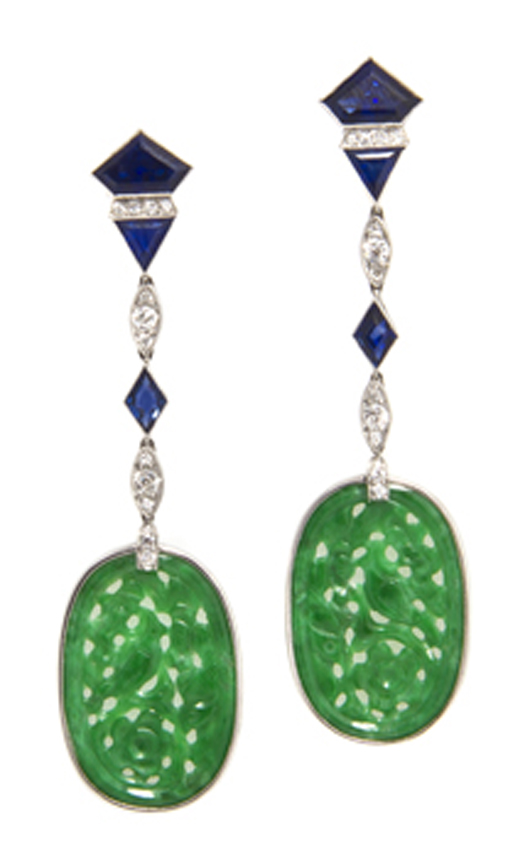
A pair of Art Deco platinum, jade, sapphire and diamond earrings sold for $10,980. Image courtesy of Leslie Hindman Auctioneers.


